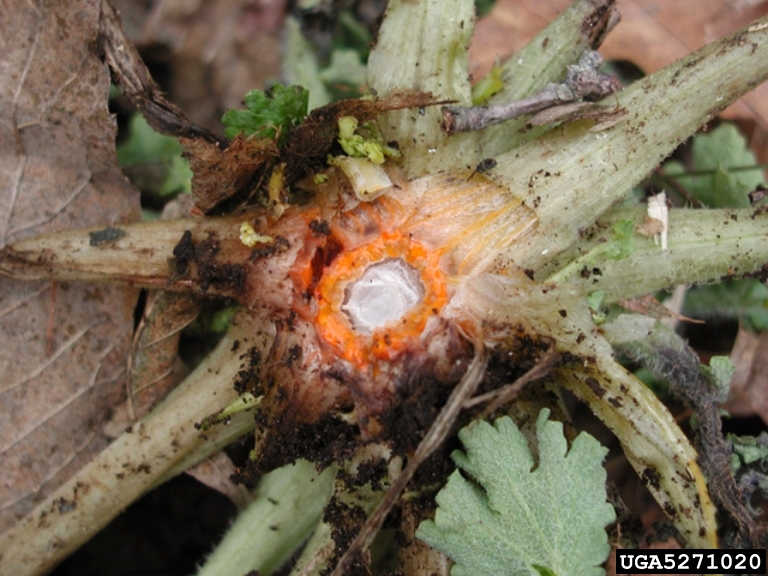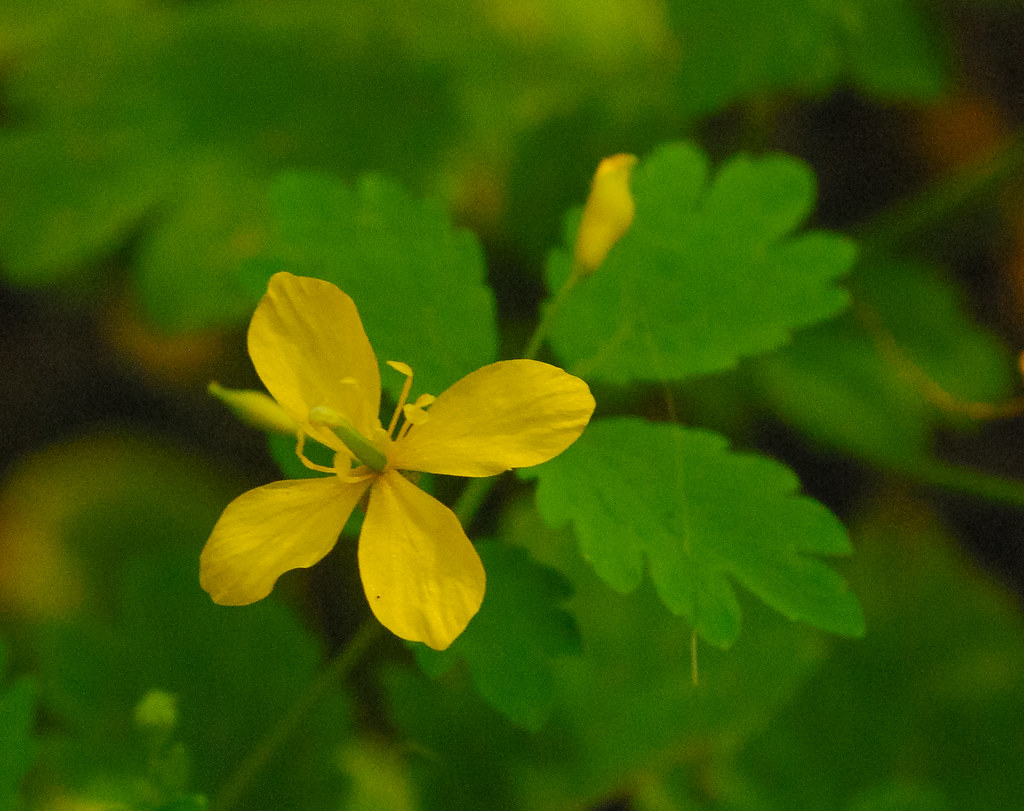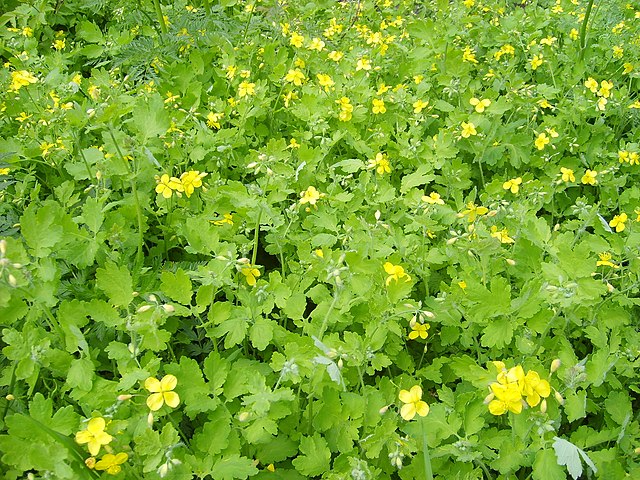Chelidonium majus
Description
- Perennial herbaceous flowering plant in the poppy family.
- Greater celandine is low to the ground early in its life cycle but flowers at a height of 1-2 feet.
- Greater celandine flowers have smaller petal which are clearly separated from each other in a cross-shape. The flowers consist of four yellow petals each with two sepals. The flowers appear from late spring to summer.
- The blue-green leaves are pinnate with lobed and wavy margins, up to 30 cm (12 in) long.
- When injured, the plant exudes a yellow to orange latex.
- The seeds are born in skinny silique-like pods (similar to those of mustards) which are held in upright clusters.
- Typically found in degraded woodlands, shady roadsides, dumps, and similarly disturbed areas.

Introduction and Spread
- Native of Europe that was introduced to North America in the late 1600’s as an herbal remedy for skin problems and many other ailments.
- Occurs in southwest British Columbia, and from Ontario to Nova Scotia.
- This plant reproduces by seed. The seeds are attractive to ants who aid in their dispersal.
Consequences of invasion
- May grow in dense stands that suppress native tree seedlings due to shade.
- The entire plant is toxic, especially the roots.
Status in the CKISS region
- Greater calendine is currently classified as Insufficient Information on the CKISS Annual Priority List.
- There is insufficient information on greater calendine and the impact that it has in the CKISS region.
- CKISS will continue to monitor and manage greater calendine.
Integrated pest management options
Prevention
- Be PlantWise to avoid spreading greater calendine.
Mechanical Treatment
- Hand pull plants (ideally before they go to seed).
- Wear gloves because the sap may irritate your skin.
Additional resources


